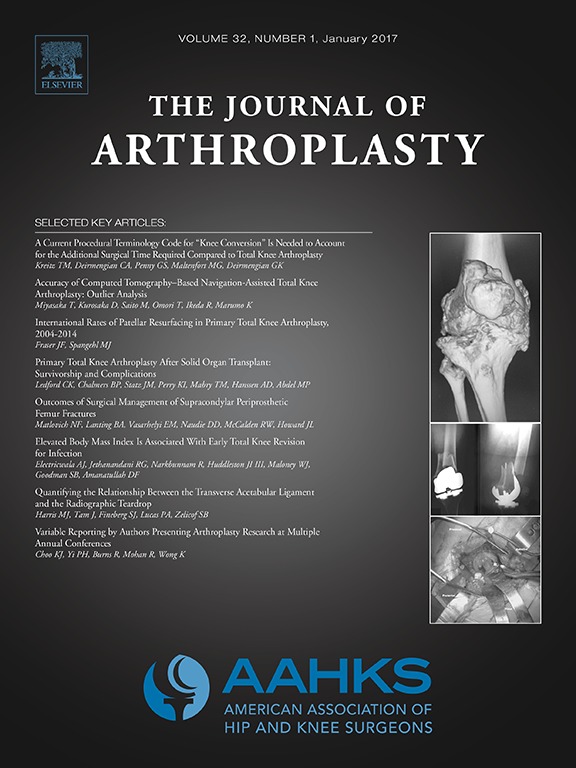
Arthroplasty
No difference in dislocation rates with or without sleeping position precautions following THA
J Arthroplasty. 2019;34(10):10.1016/j.arth.2019.05.038Traditionally, patients undergoing total hip arthroplasty (THA) have been advised to avoid certain movements that would put them at risk for dislocation. This has been of particular concern with the posterolateral, which has historically been associated with the highest dislocation rates. In recent years, however, improvements in surgical technique and implants (e.g. larger heads) have dramatically reduced dislocation rates. Thus, it is unclear if hip precautions are still necessary. The authors randomized 408 patients to standard care and patients who still had hip precautions while awake, but had no restrictions on sleeping position. Primary outcome was dislocation at 8 weeks, secondary outcomes were deep infection, pulmonary embolism, deep vein thrombosis, pain, function, and health-related quality of life. There were no significant differences on any outcomes between the two groups. The trial was designed as a non-inferiority trial, and found that not assigning sleeping precautions was indeed non-inferior to standard care.
Unlock the full article
Get unlimited access to OrthoEvidence with a free trial
Start TrialCritical appraisals of the latest, high-impact randomized controlled trials and systematic reviews in orthopaedics
Access to OrthoEvidence podcast content, including collaborations with the Journal of Bone and Joint Surgery, interviews with internationally recognized surgeons, and roundtable discussions on orthopaedic news and topics
Subscription to The Pulse, a twice-weekly evidence-based newsletter designed to help you make better clinical decisions
Exclusive access to original content articles, including in-house systematic reviews, and articles on health research methods and hot orthopaedic topics
Or continue reading this full article
Register Now

Subscribe to "The Pulse"
Evidence-Based Orthopaedics direct to your inbox.




































